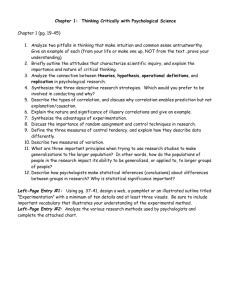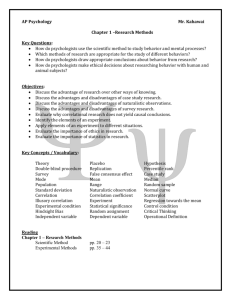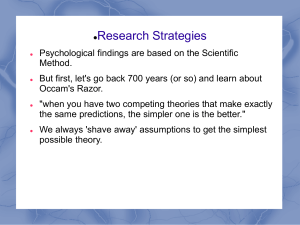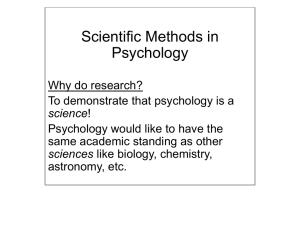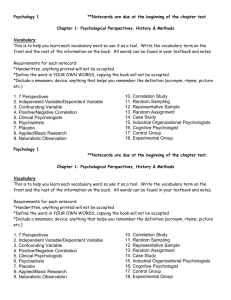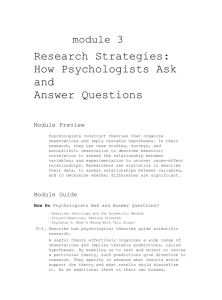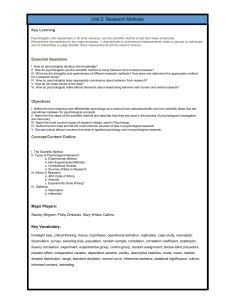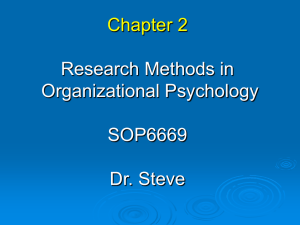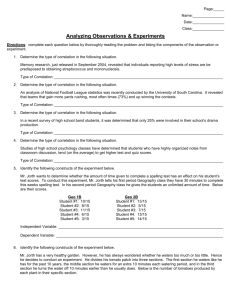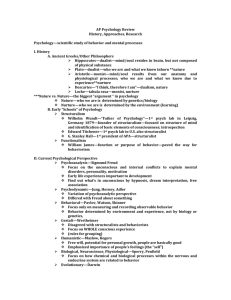Chapter 1 Practice Test
advertisement
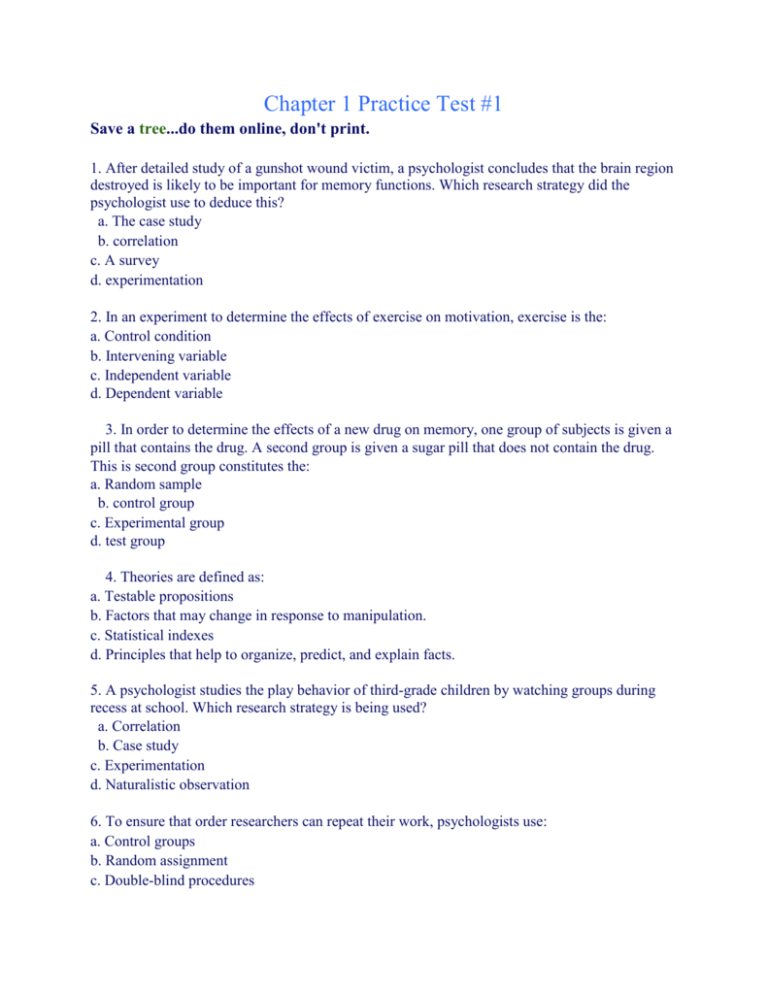
Chapter 1 Practice Test #1 Save a tree...do them online, don't print. 1. After detailed study of a gunshot wound victim, a psychologist concludes that the brain region destroyed is likely to be important for memory functions. Which research strategy did the psychologist use to deduce this? a. The case study b. correlation c. A survey d. experimentation 2. In an experiment to determine the effects of exercise on motivation, exercise is the: a. Control condition b. Intervening variable c. Independent variable d. Dependent variable 3. In order to determine the effects of a new drug on memory, one group of subjects is given a pill that contains the drug. A second group is given a sugar pill that does not contain the drug. This is second group constitutes the: a. Random sample b. control group c. Experimental group d. test group 4. Theories are defined as: a. Testable propositions b. Factors that may change in response to manipulation. c. Statistical indexes d. Principles that help to organize, predict, and explain facts. 5. A psychologist studies the play behavior of third-grade children by watching groups during recess at school. Which research strategy is being used? a. Correlation b. Case study c. Experimentation d. Naturalistic observation 6. To ensure that order researchers can repeat their work, psychologists use: a. Control groups b. Random assignment c. Double-blind procedures d. Operational definitions 7. The scientific attitude of skepticism is based on the belief that: a. People are rarely candid in revealing their thoughts. b. Mental processes can't be studied objectively. c. The scientist's intuition about behavior is usually correct. d. Ideas need to be tested against observable evidence. 8. Which of the following is not a basic research strategy used by psychologists? a. Description b. Replication c. Experimentation d. Correlation 9. Psychologists' personal values: a. Have little influence on how their experiments are conducted. b. Do not influence the interpretations of experimental results because of the use of statistical techniques that guard against subjective bias. c. Can bias both scientific observation and interpretation of data. d. Have little influence on investigative methods but a significant effect on interpretation. 10. If shoe size and IQ are negatively correlated, which of the following is true? a. People with large feet tend to have high IQs b. People with small feet tend to have high IQs c. People with small feet tend to have low IQs d. IQ is unpredictable based on a person's shoe size. 11. Which of the following research strategies would be best for determining whether alcohol impairs memory? a. Case study b. survey c. Naturalistic observation d. experiment 12. Well-done surveys measure attitudes in a representative subset, or _______________, of an entire group, or ______________. a. Population; random sample b. Control group; experimental group c. Experimental group; control group d. Random sample; population 13. What is the mean of the following distribution of scores: 2, 3, 7, 6, 1, 4, 9, 5, 8, 2 a. 5 b. 4.7 c. 4 d. 3.7 14. What is the median of the following distribution of scores: 1, 3, 7, 7, 2, 8, 4? a. 1 b. 2 c. 3 d. 4 15. What is the mode of the following distribution: 8, 2, 1, 1, 3, 7, 6, 2, 0, 2? a. 1 b. 2 c. 3 d. 7 16. In generalizing from a sample to the population, it is important that: a. The sample is representative of the population. b. The sample is large. c. The scores in the sample have low variability. d. All of the following above are observed. 17. When a difference between two groups is "statistically significant"; this means that: a. The difference is statistically real but of little practical significance. b. The difference is probably the result of sampling variation. c. The difference is not likely to be due to change variation. d. All of the above are true. 18. A lopsided set of scores that includes a number of extreme or unusual values is said to be: a. Symmetrical. c. skewed. b. Normal. d. dispersed. 19. Juwan eagerly opened an online trading account, believing that his market savvy would allow him to pick stocks that would make him a rich day trader. This belief best illustrates: a. The false consensus effect b. Illusory correlation c. Hindsight bias d. Overconfidence 20. Which of the following is the measure of central tendency that would be most affected by a few extreme scores? a. Mean b. Range c. Median d. mode Answers 1. a 2. c 3. b 4. d 5. d 6. d 7. d 8. b 9. c 10. b 11. d 12. d 13. b 14. d 15. b 16. d 17. c 18. c 19. d 20. a
